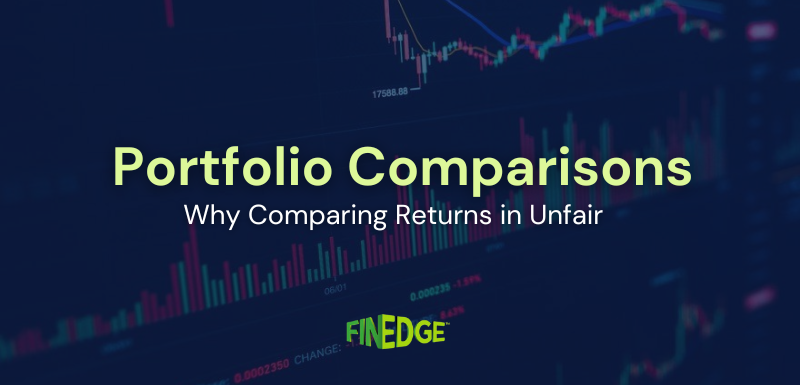Investing Insights
The Power of Compounding: How Small Investments Turn into Big Wealth
Compounding is the single most powerful force behind long-term wealth creation. It rewards patience, discipline, and consistency more than any short-term strategy ever can. If you want your investments to grow exponentially instead of linearly, compounding must be at the centre of your approach.
Which Financial Goal Should Be Your Priority While Investing?
Every investor has more than one dream, a home, a child’s education, a comfortable life and a secure future. The real challenge is deciding how to prioritise these financial goals without losing sight of what truly matters.
Regular Savings Plan: A Balanced Approach to Stability and Growth
Not every investment in a portfolio is meant to maximise returns. Some are meant to preserve capital, manage volatility, and provide predictability. A regular savings plan serves exactly this role. It is designed for investors who want a more measured approach where stability takes priority, and growth plays a supporting role rather than the lead.
The Portfolio Health Check: 5 Signals Your Investments Need Attention
Most investors assume that if their investments are performing reasonably well, there’s nothing to review. But portfolios don’t drift out of alignment overnight, they do so gradually. A portfolio health check isn’t about reacting to markets or chasing returns. It’s about ensuring your investments continue to reflect your goals, your life, and your temperament.
From Coffee to Crorepati: Small Lifestyle Tweaks Gen Z Can Make to Start Investing Early
Gen Z is often told to “stop buying coffee” if they want to invest. But that misses the point. Building wealth isn’t about sacrificing everything you enjoy. It’s about understanding how small, everyday decisions shape long-term habits. Starting early even with modest amounts can quietly make a meaningful difference over time.
Lessons From the World’s Best Investors to Carry Into the New Year
As one year ends and another begins, many investors look back at returns, missed opportunities, or decisions they wish they had made differently. But the most useful lessons rarely come from year-end numbers. They come from principles that have worked across decades and market cycles. As you step into the new year, these ideas from some of the world’s most respected investors offer a far more reliable guide than any forecast.
Why Consolidating All Your Investments on One Platform Makes Sense
Many investors accumulate investments gradually, across employers, platforms, advisors, and products. Over time, what began as diversification can turn into fragmentation. Consolidating investments on one platform is not about reducing choice or control; it is about gaining clarity, aligning investments with goals, and improving decision-making across market cycles.
Why Comparing Investment Returns Can Be Misleading
At some point, most investors have compared their investment returns with a friend, a colleague, or a number they saw online and wondered why their outcomes looked different. While this instinct is natural, return comparisons are often incomplete and, in many cases, misleading. Understanding why returns differ is far more important than comparing the numbers themselves.
CAGR vs XIRR vs Absolute Return: Understanding Which Return Really Matters
When reviewing investment performance, investors often come across multiple return figures absolute return, CAGR, and XIRR. While these numbers may appear similar, they measure performance very differently. Understanding what each metric represents, and when to use it, is essential for making informed investment decisions and setting realistic expectations.
Why Successful Investing Follows a Clear Why–How–Where Framework
Investing decisions are often influenced by market trends, recent performance, or product recommendations. However, long-term investment success depends more on structure than selection. A clear Why–How–Where framework brings discipline to investing by ensuring that goals are defined first, planning comes next, and product choices follow. This approach helps investors build portfolios that are aligned with their objectives and sustainable over time.
The Impact of Inflation on Your Retirement Plan
Inflation doesn’t feel alarming month to month, but over 25 years it can completely reshape your retirement needs. Planning with inflation in mind ensures your future lifestyle remains as comfortable as it is today.
Responsible Credit Card Usage: Three Principles Every Consumer Should Follow
Credit cards are powerful financial tools when used correctly, offering convenience, rewards, and short-term liquidity. But when used without discipline, they can quickly turn into high-interest liabilities. Understanding a few essential principles can help you manage your cards responsibly, maintain a strong credit score, and avoid stress caused by compounding debt.
Latest Posts
The Power of Compounding: How Small Investments Turn into Big Wealth
Jan 14, 2026
Which Financial Goal Should Be Your Priority While Investing?
Jan 12, 2026
Regular Savings Plan: A Balanced Approach to Stability and Growth
Jan 07, 2026
The Portfolio Health Check: 5 Signals Your Investments Need Attention
Jan 05, 2026
From Coffee to Crorepati: Small Lifestyle Tweaks Gen Z Can Make to Start Investing Early
Jan 02, 2026
The Importance of your Child’s Education Goal
Feb 28, 2024
Why Retirement Planning is Important
Nov 08, 2023
Oct 31, 2023
Investing Behaviour and the investing roller coaster
Oct 12, 2023
Investing Stories




.png)



.png)

.png)
.png)





.jpg)
_(1)1.jpg)
.jpg)
.jpg)
.jpg)